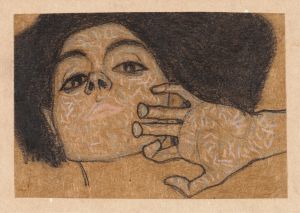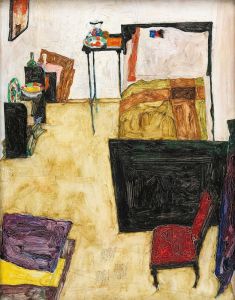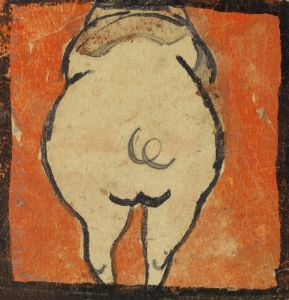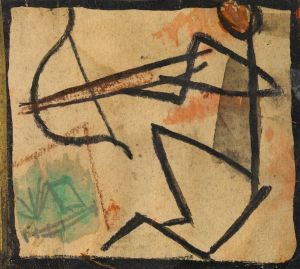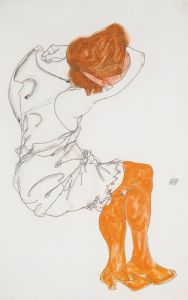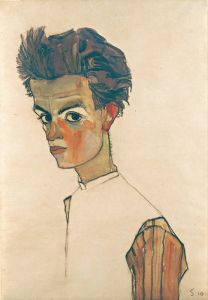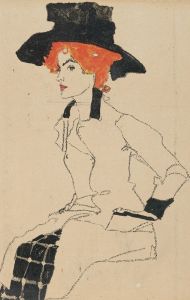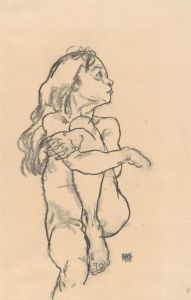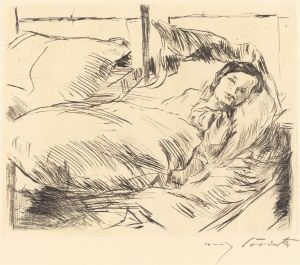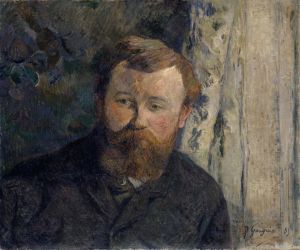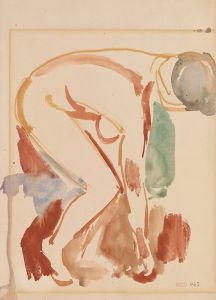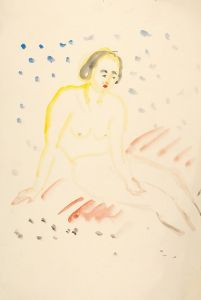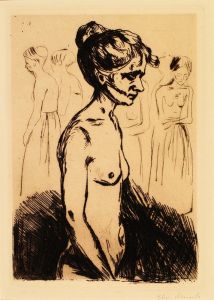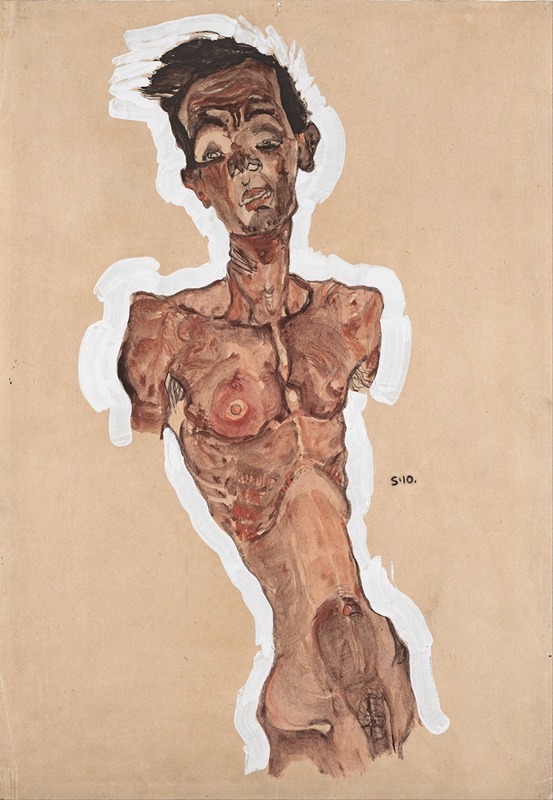
Nude Self-Portrait
A hand-painted replica of Egon Schiele’s masterpiece Nude Self-Portrait, meticulously crafted by professional artists to capture the true essence of the original. Each piece is created with museum-quality canvas and rare mineral pigments, carefully painted by experienced artists with delicate brushstrokes and rich, layered colors to perfectly recreate the texture of the original artwork. Unlike machine-printed reproductions, this hand-painted version brings the painting to life, infused with the artist’s emotions and skill in every stroke. Whether for personal collection or home decoration, it instantly elevates the artistic atmosphere of any space.
Egon Schiele, an Austrian painter known for his intense and raw portrayal of the human form, created "Nude Self-Portrait" in 1910. This work is a striking example of Schiele's exploration of the human body and his distinctive style, which often included distorted figures and bold lines. Schiele was a leading figure in early 20th-century Austrian art and a protégé of Gustav Klimt. His work is often associated with the Expressionist movement, characterized by its focus on representing emotional experiences rather than physical reality.
"Nude Self-Portrait" exemplifies Schiele's fascination with the human figure, particularly his own. Throughout his career, Schiele produced numerous self-portraits, using his own body as a primary subject to explore themes of identity, sexuality, and mortality. This particular self-portrait is notable for its unflinching honesty and the vulnerability it conveys. Schiele's depiction of himself is stark and confrontational, with an emphasis on the angularity and tension of the body. The painting reflects his interest in capturing the psychological depth and complexity of his subjects.
The composition of "Nude Self-Portrait" is characterized by Schiele's use of exaggerated poses and dramatic contrasts. The figure is often depicted with elongated limbs and a twisted torso, creating a sense of movement and dynamism. Schiele's use of line is particularly significant in this work; his bold, expressive lines define the contours of the body and convey a sense of immediacy and intensity. The background is typically minimal, focusing the viewer's attention entirely on the figure itself.
Schiele's approach to color in "Nude Self-Portrait" is also noteworthy. He often employed a limited palette, using muted tones to emphasize the starkness of the figure. The skin is rendered in pale, almost ghostly hues, which contrasts sharply with the darker outlines and shadows. This use of color enhances the emotional impact of the painting, highlighting the isolation and introspection of the subject.
Egon Schiele's work, including "Nude Self-Portrait," was often controversial during his lifetime due to its explicit content and unconventional style. His depictions of nudity and sexuality challenged the norms of early 20th-century society and art. Despite facing criticism and even legal issues, Schiele remained committed to his artistic vision, pushing the boundaries of expression and representation.
Today, Schiele is recognized as a pivotal figure in modern art, and his works are celebrated for their emotional depth and innovative approach to the human form. "Nude Self-Portrait" is a testament to Schiele's unique ability to capture the complexities of the human psyche through his art. His influence can be seen in the works of later artists who sought to explore similar themes of identity and existentialism.
The painting is housed in various collections and continues to be studied and admired for its boldness and introspective quality. Schiele's legacy endures as a testament to his skill and his willingness to confront the deeper aspects of human existence through his art.





